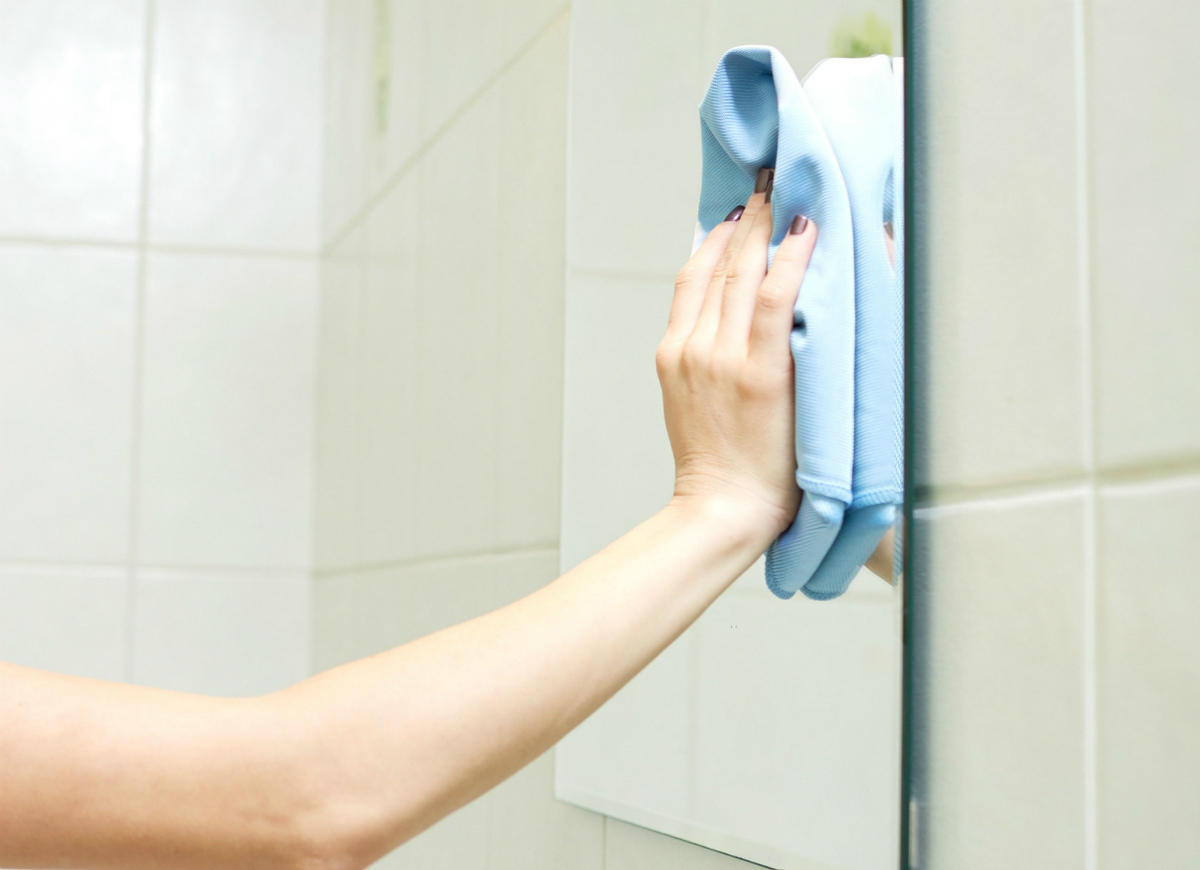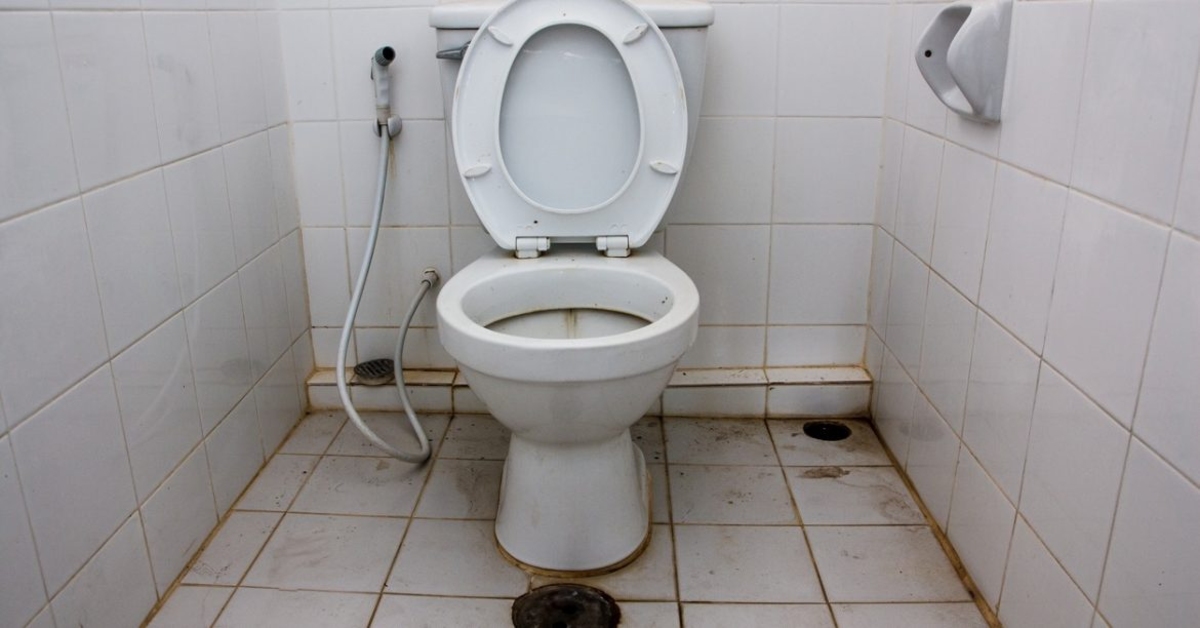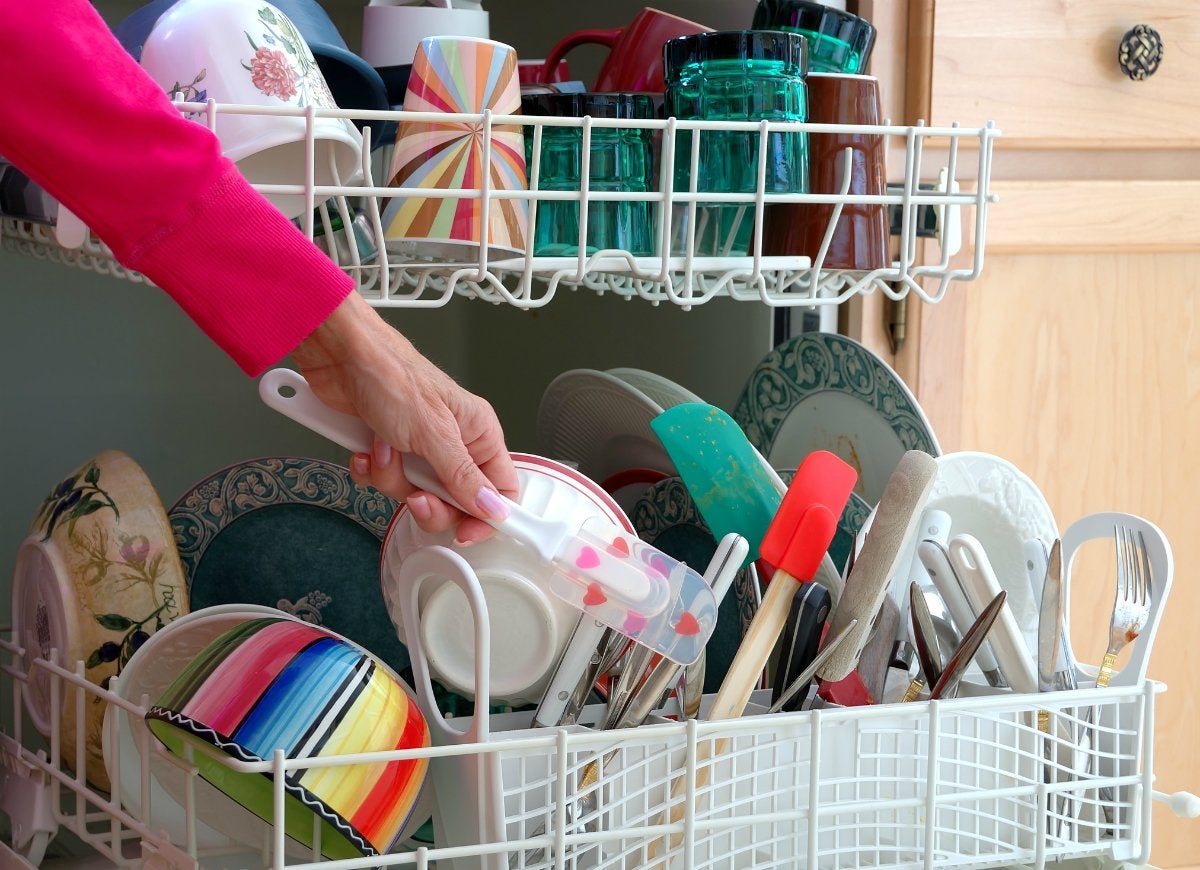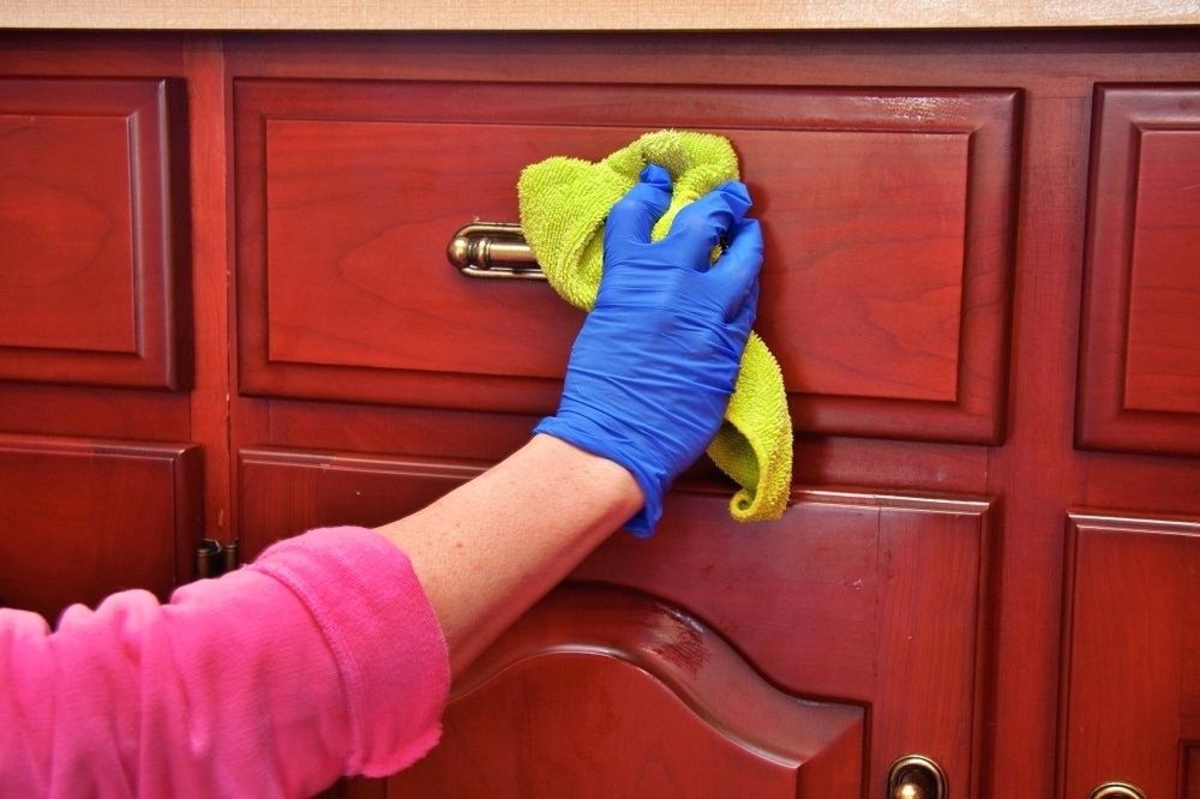Home>Interior Design>Mirror Cleaning Mistakes: 9 Things Professionals Avoid


Interior Design
Mirror Cleaning Mistakes: 9 Things Professionals Avoid
Modified: January 24, 2024
Avoid these 9 mirror cleaning mistakes that professionals know to steer clear of. Enhance your interior design with these expert tips.
(Many of the links in this article redirect to a specific reviewed product. Your purchase of these products through affiliate links helps to generate commission for Storables.com, at no extra cost. Learn more)
Introduction
Maintaining clean and streak-free mirrors is an essential aspect of interior design. Mirrors not only serve a functional purpose, but they also add depth, elegance, and an illusion of space to any room. However, many people make common mistakes when it comes to cleaning their mirrors, which can result in unsightly streaks, damage to the mirror’s surface, and an overall diminished aesthetic. In this article, we will explore nine mirror cleaning mistakes that professionals diligently avoid. By understanding and avoiding these mistakes, you can ensure that your mirrors remain crystal clear and enhance the beauty of your space.
Cleaning a mirror may seem like a simple task, but there are several factors to consider to achieve optimal results. From the choice of cleaning solutions to the technique used, each step plays a crucial role in preserving the mirror’s clarity and reflective qualities. By avoiding the following mistakes, you can save time, effort, and potentially costly damage to your mirrors.
So, let’s dive into the nine mirror cleaning mistakes that professionals always avoid to maintain pristine and spotless mirrors. By the end of this article, you will have the knowledge needed to clean your mirrors effectively and avoid common pitfalls.
Key Takeaways:
- Choose gentle, non-abrasive cleaning solutions like warm water and mild dish soap to maintain pristine mirrors without damaging the surface or leaving streaks.
- Regularly dusting, using gentle materials, and avoiding direct sunlight are essential for achieving streak-free, flawless mirrors that enhance any space.
Using the Wrong Cleaning Solutions
Choosing the right cleaning solution is crucial when it comes to cleaning your mirrors effectively. Many people make the mistake of using harsh chemicals or abrasive cleaners, thinking that they will provide a thorough clean. However, these products can actually damage the mirror’s surface and leave behind streaks and smudges.
Professionals understand that gentle and non-abrasive cleaning solutions are the key to maintaining a mirror’s pristine condition. One of the most effective and widely recommended solutions is a mixture of warm water and mild dish soap. This solution is gentle enough to remove dirt, dust, and fingerprints without harming the mirror’s surface.
To create this DIY cleaning solution, simply mix a few drops of mild dish soap with warm water in a spray bottle. Gently shake the bottle to ensure the soap is properly mixed. It’s important to note that using excessive soap can leave behind a soapy residue, so use sparingly.
Another alternative cleaning solution that professionals often use is white vinegar mixed with water. This solution is particularly effective in removing stubborn stains and watermarks. Simply mix equal parts of white vinegar and water in a spray bottle, and you’re ready to clean. However, be cautious and avoid using vinegar on mirrors with an anti-reflective coating, as it can damage the coating.
When applying any cleaning solution to your mirrors, make sure to use a soft, lint-free microfiber cloth or a sponge. These tools will prevent scratches and ensure a streak-free shine. Start by lightly dampening the cloth or sponge with the cleaning solution, and gently wipe the mirror in circular motions.
Remember, using the wrong cleaning solutions, such as ammonia-based cleaners, bleach, or abrasive chemicals, can lead to irreversible damage to your mirrors. These products can strip the mirror’s protective coating, leaving it vulnerable to scratches and degradation. Always opt for mild and gentle cleaning solutions to preserve and prolong the life of your mirrors.
By avoiding the mistake of using the wrong cleaning solutions, you can ensure that your mirrors remain sparkling and free from damage. Taking the time to choose the right cleaning solution will result in mirrors that not only look clean but truly shine and enhance the overall aesthetics of your space.
Neglecting to Dust First
One of the most common mirror cleaning mistakes that people make is neglecting to dust the mirror before starting the cleaning process. Dust and debris accumulate on the mirror’s surface over time, and if not removed before cleaning, it can lead to scratching and streaking.
Before reaching for the cleaning solution, take a few moments to dust the mirror using a soft, dry cloth or a feather duster. This will remove any loose particles, lint, or hair that may be present on the mirror. Neglecting this step can result in the dust particles spreading and smearing across the mirror when cleaning.
Start by gently running the cloth or duster along the surface of the mirror, paying attention to the corners and edges. Avoid using harsh materials, such as paper towels or rough fabrics, as they can cause microscopic scratches on the mirror’s surface. Remember, the purpose of this step is to remove loose debris, not to scrub or polish the mirror.
By dusting your mirror prior to cleaning, you are ensuring that the subsequent cleaning process is more effective. Removing the dust particles allows the cleaning solution to make direct contact with the mirror, providing a thorough clean and better results in terms of clarity and shine.
In addition to dusting the mirror’s surface, it’s also important to periodically dust the surrounding areas and furniture. Dust particles in the air can settle on the mirror’s surface and contribute to its overall dirtiness. Regular cleaning and dusting of the room will minimize the amount of dirt and debris that accumulates on your mirrors.
By making the effort to dust your mirrors before cleaning, you are taking a proactive step towards maintaining their cleanliness and preventing potential scratching or streaking. Remember, a little pre-cleaning preparation goes a long way in preserving the beauty and shine of your mirrors.
Using Abrasive Materials or Scrubbing Too Hard
When it comes to cleaning mirrors, gentle handling is key. One common mistake that people make is using abrasive materials or scrubbing too hard, thinking that it will provide a better clean. However, this can lead to scratches, scuff marks, and even irreversible damage to the mirror’s surface.
Avoid using rough materials, such as scouring pads, steel wool, or abrasive sponges, as they can leave behind visible scratches on the mirror. Instead, opt for soft, non-abrasive materials like microfiber cloths or gentle sponges specifically designed for mirror cleaning. These materials are effective in removing dirt and grime without harming the mirror’s surface.
When cleaning the mirror, apply gentle pressure and use light, circular motions. Avoid scrubbing vigorously or using excessive force, as this can cause the mirror to flex or distort, potentially leading to cracks or breakage. Remember, mirrors are delicate and should be treated with care.
If you encounter stubborn spots or smudges on the mirror, resist the temptation to scrub harder. Instead, dampen the area with a small amount of the recommended cleaning solution and let it sit for a few seconds. This will help loosen the dirt or residue, making it easier to wipe away without damaging the mirror.
It’s worth mentioning that if your mirror has a decorative frame, take extra caution when cleaning around the edges. Framed mirrors often have delicate or intricate designs that can be easily damaged by abrasive materials. Use a soft cloth or a small brush to gently clean the frame, ensuring that the cleaning solution does not come into contact with any decorative elements.
By avoiding the use of abrasive materials and scrubbing too hard, you will preserve the integrity and clarity of your mirrors. A gentle touch and the right cleaning tools are all you need to maintain a streak-free and flawless mirror surface. Treat your mirrors with care, and they will continue to reflect light and enhance the beauty of your space for years to come.
Cleaning in Direct Sunlight
Cleaning mirrors in direct sunlight may seem like a convenient option, as the light can help you see any streaks or smudges more clearly. However, it’s important to avoid this common mistake, as cleaning mirrors in direct sunlight can actually make the cleaning process more challenging and result in streaks and residue.
When you clean mirrors in direct sunlight, the cleaning solution evaporates quickly due to the heat, leaving behind streaks and smears. The sunlight can also cause the cleaning solution to dry too fast, making it difficult to wipe away effectively. This can lead to frustrating and unsightly streaks that are difficult to remove.
To avoid this issue, choose a time of day when the mirror is not directly exposed to harsh sunlight. Cleaning your mirrors in the early morning or late evening, or on cloudy days, will provide the best conditions for achieving a streak-free shine.
If you don’t have control over the lighting in the room, you can create your own shaded area by using blinds, curtains, or even a large sheet to temporarily block the sunlight from directly hitting the mirror. This will create a more controlled environment for cleaning.
When cleaning the mirror, it’s essential to work quickly but efficiently. Spray a small amount of the cleaning solution onto the microfiber cloth or sponge rather than directly onto the mirror. This will help prevent excessive moisture from sitting on the mirror’s surface and minimize the chances of streaks.
Additionally, make sure to use a clean, dry microfiber cloth to wipe away the cleaning solution. Start from the top of the mirror and work your way down in smooth, overlapping strokes. Avoid circular motions, as they can create swirl marks or streaks. Remember to frequently change sides or fold the cloth to ensure you’re always working with a clean surface.
By avoiding the mistake of cleaning mirrors in direct sunlight, you can achieve a streak-free and flawless result. Cleaning mirrors when the lighting conditions are optimal will make the process more efficient and ensure that you’re able to maintain the mirror’s clarity and reflective qualities.
Leaving Streaks Behind
Leaving streaks behind is another common mirror cleaning mistake that can detract from the overall appearance of your mirrors. Streaks not only make your mirrors look dirty, but they can also be quite frustrating to remove once they have dried.
To avoid leaving streaks on your mirrors, it’s important to use the right technique and tools. Start by choosing a high-quality microfiber cloth or a lint-free cloth specifically designed for cleaning mirrors. These cloths are designed to absorb moisture and lift dirt and grime without leaving behind streaks.
When applying the cleaning solution to the mirror, be mindful of the amount you use. Applying too much solution can result in excess liquid that is difficult to wipe away, leading to streaks. Instead, aim for a fine mist or a light spray of the solution onto the cloth, ensuring that it is evenly distributed.
Next, using gentle pressure, begin wiping the mirror in straight, overlapping strokes. Start from the top of the mirror and work your way down, continuing until the entire surface has been cleaned. Be sure to follow a consistent pattern and avoid going back and forth, as this can contribute to streaking.
As you clean, periodically check the cloth for any signs of moisture or residue buildup. If necessary, switch to a clean, dry cloth to continue the cleaning process. This will help prevent the transfer of residue back onto the mirror and minimize the chances of streaks.
In addition to the cleaning technique, it’s important to ensure that the mirror is completely dry after cleaning. Leaving any moisture on the surface can result in water spots or streaks. Take a clean, dry cloth and gently pat the mirror dry, paying particular attention to the edges and corners where water droplets tend to accumulate.
Remember, the key to preventing streaks is to use the right tools, follow a consistent cleaning pattern, and ensure that the mirror is thoroughly dried. By implementing these steps, you will achieve flawlessly clean mirrors that enhance the overall aesthetic of your space.
When cleaning a mirror, avoid using ammonia-based cleaners as they can leave streaks. Instead, use a mixture of water and vinegar for a streak-free shine.
Ignoring the Frame or Edges
When cleaning mirrors, it’s important to pay attention not only to the reflective surface but also to the frame and edges. Neglecting these areas is a common mistake that can leave your mirror looking incomplete and less visually appealing.
The frame of a mirror, whether it’s made of wood, metal, or another material, can accumulate dust, dirt, and fingerprints over time. To keep the entire mirror looking clean and polished, it’s essential to include the frame in your cleaning routine.
Start by dusting the frame using a soft, dry cloth or a gentle brush. Remove any loose particles and surface dirt. If the frame has stubborn stains or grime, you can lightly dampen the cloth with a mixture of mild dish soap and warm water, or with an appropriate cleaner for the specific material of the frame. Gently wipe the frame to remove any stains or dirt, and then dry it thoroughly to prevent water damage or discoloration.
In addition to the frame, don’t forget to clean the edges of the mirror. Dust and fingerprints can accumulate along the edges, diminishing the mirror’s overall appearance. Use a soft cloth or a cotton swab dipped in the cleaning solution to carefully clean along the edges of the mirror. Be cautious not to apply excessive pressure or use abrasive materials that could scratch or damage the edges.
By addressing the frame and edges of your mirror, you complete the cleaning process and ensure that every part of the mirror is sparkling and dust-free. This attention to detail will enhance the overall aesthetic of the mirror and contribute to a polished and well-maintained look in your space.
Remember, mirrors are not just about the reflective surface; they are a complete design element in the room. By taking the time to clean the frame and edges, you showcase the mirror’s full beauty and maintain its pristine appearance for years to come.
Using Too Much Moisture or Liquid
Using excessive moisture or liquid when cleaning mirrors is a mistake that can lead to unwanted streaks, water spots, and even damage to the mirror’s surface. It’s important to remember that when it comes to mirror cleaning, less is more.
Using too much liquid can make the cleaning process more difficult and increase the likelihood of streaks. Instead, opt for a light mist or spray of the cleaning solution onto a microfiber cloth or sponge. This allows for better control over the amount of moisture being applied to the mirror.
By using a damp cloth or sponge rather than saturating the mirror with excessive liquid, you can effectively remove dirt, smudges, and fingerprints without leaving behind streaks. The goal is to have just enough moisture to lift the dirt and grime, providing a clean and clear surface.
In addition to using the right amount of moisture, it’s important to choose a cleaning solution that is suitable for mirrors. As mentioned earlier, a mixture of warm water and mild dish soap or a solution of white vinegar and water is typically recommended. These solutions provide effective cleaning power without leaving behind excessive moisture or residue.
When applying the cleaning solution, be sure to distribute it evenly across the cloth or sponge to avoid concentrated areas of liquid. This will help prevent excess moisture from running down the mirror and causing streaks. Remember to work in small sections, completing one area before moving on to the next.
After cleaning, it’s important to ensure that all moisture is removed from the mirror’s surface. Take a clean, dry microfiber cloth and gently buff the mirror, using light pressure. This will help eliminate any remaining moisture and prevent water spots from forming.
By using the right amount of moisture or liquid during the cleaning process, you can achieve a streak-free and spotless mirror. Keeping the moisture to a minimum will ensure that the mirror dries quickly and leaves behind a beautiful, reflective surface that enhances the overall aesthetic of your space.
Using Paper Towels or Newspapers
Using paper towels or newspapers to clean mirrors is a mistake that many people make, thinking that these materials will provide a streak-free shine. However, this method often leads to more problems than solutions.
Paper towels and newspapers may seem convenient and readily available, but they can leave behind lint, streaks, and even microscopic scratches on the mirror’s surface. The fibers in these materials can easily transfer onto the mirror, creating an unsightly and frustrating cleaning experience.
Instead of using paper towels or newspapers, opt for soft, lint-free materials specifically designed for cleaning mirrors. Microfiber cloths are an excellent choice as they are highly absorbent, trap dirt and dust effectively, and leave no residue or lint behind.
When using a microfiber cloth, make sure it is clean and free from any debris or lint. Using a dirty or worn cloth can transfer dirt onto the mirror, defeating the purpose of cleaning. Alternatively, if you prefer to use a sponge, choose a soft sponge specifically designed for mirror cleaning to minimize the risk of scratching.
Apply the recommended cleaning solution onto the microfiber cloth or sponge, rather than directly onto the mirror. This allows for better control and avoids over-saturating the surface with the cleaning solution. Begin by gently wiping the mirror in straight, overlapping strokes, working from the top to the bottom. Remember to change sides or fold the cloth to a clean area as you go along to ensure an effective clean.
By using the right materials, such as microfiber cloths or designated mirror cleaning sponges, you can achieve a streak-free and polished mirror. These materials are designed to trap and lift dirt, leaving your mirror clean and clear without the risk of lint or scratches.
Remember, it’s important to invest in the right tools for mirror cleaning to achieve the best results. By avoiding paper towels or newspapers and opting for lint-free materials, you can ensure that your mirrors maintain their clarity and enhance the overall aesthetic of your space.
Skipping Regular Mirror Cleaning
Skipping regular mirror cleaning is a mistake that can gradually diminish the mirror’s visual appeal and overall functionality. Over time, mirrors accumulate dust, fingerprints, smudges, and other contaminants that can dull their reflective surface and diminish the clarity.
Regular cleaning is essential not only for maintaining the mirror’s appearance but also for preserving its longevity. Dust and dirt particles can gradually scratch the mirror’s surface if left unattended. To prevent this, incorporate regular mirror cleaning into your cleaning routine.
The frequency of cleaning will depend on various factors, such as the location of the mirror and the extent of its use. However, a general guideline is to clean mirrors at least once every two weeks, if not more frequently. High-traffic areas, such as bathrooms or dressing areas, may require more frequent cleaning.
When cleaning mirrors regularly, it’s important to follow the proper techniques and use the right tools. As mentioned earlier, use a mild cleaning solution, such as a mixture of warm water and dish soap or a solution of white vinegar and water. These solutions effectively remove dirt and grime without causing any damage to the mirror’s surface.
Take the time to dust the mirror before cleaning to remove any loose particles that can scratch the surface. Then, apply the cleaning solution to a soft cloth or sponge and gently wipe the mirror in straight, overlapping strokes. Be sure to clean not only the reflective surface but also the frame and edges, as they can accumulate dust and dirt as well.
Once you’ve cleaned the mirror, it’s important to thoroughly dry it to prevent water spots or streaks. Use a clean, dry microfiber cloth and gently pat the mirror dry. Pay attention to the edges and corners, where moisture can accumulate.
Another important aspect of regular mirror maintenance is preventive care. Avoid touching the mirror’s surface with dirty or greasy hands, as this can leave fingerprints and smudges. Encourage family members or visitors to do the same. Also, consider placing mirrors away from areas where they are likely to be splashed with water or other liquids to minimize the need for frequent cleaning.
By incorporating regular mirror cleaning into your routine, you ensure that your mirrors maintain their pristine appearance and functionality. Regular cleaning prevents the buildup of dirt and damage and enhances the overall aesthetic of your space. A clean, clear mirror can instantly brighten a room and create a sense of elegance and sophistication.
Conclusion
Properly cleaning mirrors is crucial for maintaining their beauty, functionality, and longevity. By avoiding common mirror cleaning mistakes, you can ensure that your mirrors remain crystal clear, free of streaks, and enhance the overall aesthetics of your space.
Using the wrong cleaning solutions can lead to damage and streaks on the mirror’s surface. Opt for mild and non-abrasive cleaning solutions like warm water and dish soap or a vinegar and water solution.
Neglecting to dust before cleaning can result in scratching and spreading of dirt and debris. Take the time to dust your mirrors and the surrounding areas before beginning the cleaning process.
Avoid using abrasive materials or scrubbing too hard, as this can cause scratches and damage to the mirror. Opt for soft and non-abrasive materials like microfiber cloths or gentle sponges.
Cleaning mirrors in direct sunlight can lead to streaks and smears due to rapid evaporation of the cleaning solution. Choose a time of day when the mirror is not directly exposed to harsh sunlight, or create shade using blinds or curtains.
Leaving streaks behind is a common mistake that can diminish the mirror’s appearance. Use lint-free materials like microfiber cloths and smooth, overlapping strokes to ensure a streak-free shine.
Don’t forget to clean the frame and edges of the mirror, as neglecting these areas can make the mirror look incomplete and less visually appealing.
Using too much moisture or liquid can result in streaks and water spots. Apply a light mist or spray of the cleaning solution onto a cloth or sponge, and ensure thorough drying after cleaning.
Avoid using paper towels or newspapers, as they can leave behind lint, streaks, and scratches. Opt for soft and lint-free materials designed for mirror cleaning, such as microfiber cloths.
Lastly, skipping regular mirror cleaning can lead to a gradual decline in the mirror’s appearance and functionality. Incorporate regular cleaning into your routine to prevent dirt, scratches, and other contaminants from building up on the mirror’s surface.
By taking these simple steps and avoiding these common mirror cleaning mistakes, you can enjoy clean, clear, and streak-free mirrors that add beauty and elegance to your home or space. Give your mirrors the care and attention they deserve, and they will continue to reflect light, enhance your décor, and create a visually stunning environment for years to come.
Frequently Asked Questions about Mirror Cleaning Mistakes: 9 Things Professionals Avoid
Was this page helpful?
At Storables.com, we guarantee accurate and reliable information. Our content, validated by Expert Board Contributors, is crafted following stringent Editorial Policies. We're committed to providing you with well-researched, expert-backed insights for all your informational needs.














0 thoughts on “Mirror Cleaning Mistakes: 9 Things Professionals Avoid”